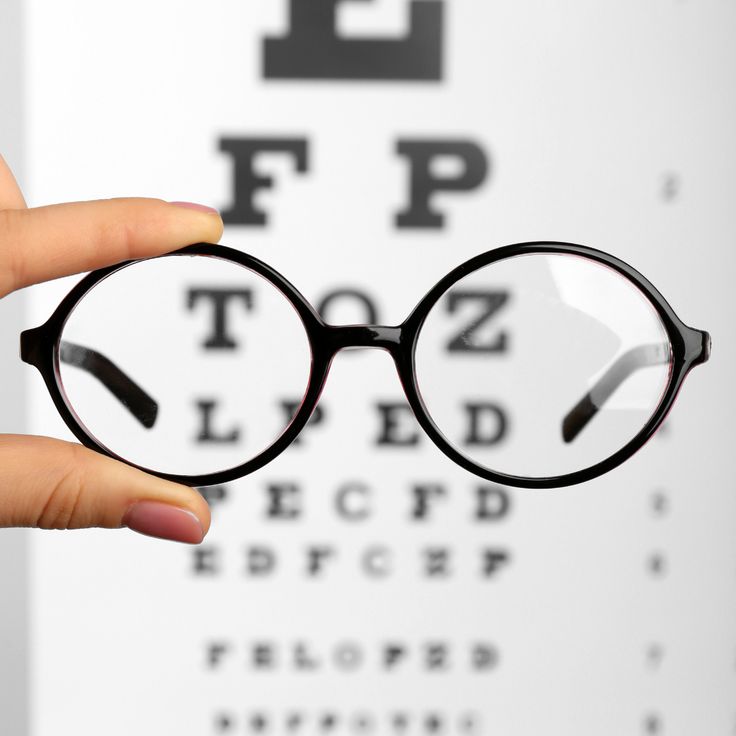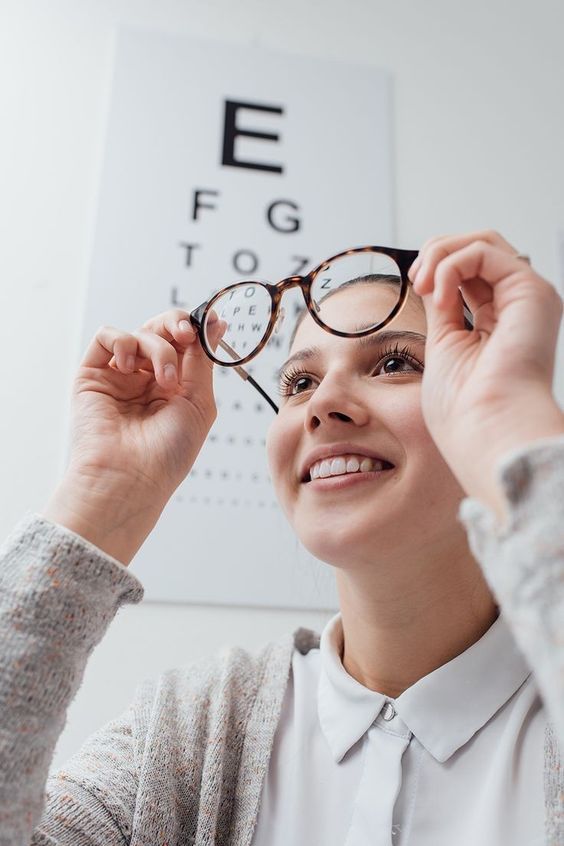

 Thank you for contacting us!
Thank you for contacting us!
We've received your inquiry.
Due to high demand, our respons time may take 1-2 business days.
We appreciate your patience and understanding.
 Thank you for contacting us!
Thank you for contacting us!
We've received your inquiry.
Due to high demand, our respons time may take 1-2 business days.
We appreciate your patience and understanding.
LASIK is a type of laser vision correction surgery designed to reduce or eliminate the need for glasses or contact lenses. It is commonly used to correct myopia (nearsightedness), hyperopia (farsightedness), and astigmatism, helping patients achieve clearer, more stable vision in everyday life.At its core, LASIK works by reshaping the cornea, the transparent front surface of the eye. When the cornea’s shape prevents light from focusing properly on the retina, vision becomes blurred. LASIK precisely adjusts this shape so that light can focus correctly, resulting in sharper vision.The procedure itself is relatively quick. After numbing eye drops are applied, a thin corneal flap is created, and a laser is used to reshape the underlying corneal tissue based on the patient’s individual eye measurements. The flap is then repositioned, where it naturally adheres without stitches. The entire process typically takes around 10–15 minutes per eye.One of the reasons LASIK is widely chosen is its fast recovery time. Many patients notice significant visual improvement within hours, and most are able to return to daily activities shortly after surgery. While mild dryness or temporary visual fluctuations can occur during recovery, these symptoms usually improve with proper postoperative care.However, LASIK is not a one-size-fits-all procedure. The most important step is a detailed preoperative eye examination. Factors such as corneal thickness, degree of astigmatism, overall eye health, and lifestyle must all be carefully evaluated. This thorough assessment allows doctors to determine whether LASIK is suitable or if another vision correction option would be more appropriate.Real patient experiences often reflect this process. For example, patients with very poor vision or high astigmatism are often surprised by how short the procedure is and how quickly their vision improves afterward—sometimes within the same day. Just as important, many report that clear explanations and attentive care help reduce anxiety, especially for those who feel nervous about medical procedures. In the end, LASIK is not just about advanced laser technology. Its success depends on accurate diagnosis, personalized treatment planning, and experienced medical care. When these elements come together, LASIK can be a safe and effective way to achieve clearer vision and greater freedom from corrective lenses.#SMILEPro #LaserEyeSurgery #VisionCorrection #ClearVision #EyeSurgery #MyopiaTreatment #AstigmatismCorrection #NoMoreGlasses #NoMoreContacts #EyeCare #BGNEyeClinic #ZeissTechnology #SeoulEyeClinic #ExpertSurgeons #InternationalPatients #MedicalTourismKorea #SafeEyeSurgery📞 Tel: 010-3435-5770 (KakaoTalk, WhatsApp available) 📧 Email: info@bgneyeclinic.com Website: bgneyeclinic.com Address: Lotte World Tower, 11th Floor, 300 Olympic Road, Songpa-gu, Seoul, Korea
.jpg)
.jpg)
LASIK is a type of laser vision correction surgery designed to reduce or eliminate the need for glasses or contact lenses. It is commonly used to correct myopia (nearsightedness), hyperopia (farsightedness), and astigmatism, helping patients achieve clearer, more stable vision in everyday life.At its core, LASIK works by reshaping the cornea, the transparent front surface of the eye. When the cornea’s shape prevents light from focusing properly on the retina, vision becomes blurred. LASIK precisely adjusts this shape so that light can focus correctly, resulting in sharper vision.The procedure itself is relatively quick. After numbing eye drops are applied, a thin corneal flap is created, and a laser is used to reshape the underlying corneal tissue based on the patient’s individual eye measurements. The flap is then repositioned, where it naturally adheres without stitches. The entire process typically takes around 10–15 minutes per eye.One of the reasons LASIK is widely chosen is its fast recovery time. Many patients notice significant visual improvement within hours, and most are able to return to daily activities shortly after surgery. While mild dryness or temporary visual fluctuations can occur during recovery, these symptoms usually improve with proper postoperative care.However, LASIK is not a one-size-fits-all procedure. The most important step is a detailed preoperative eye examination. Factors such as corneal thickness, degree of astigmatism, overall eye health, and lifestyle must all be carefully evaluated. This thorough assessment allows doctors to determine whether LASIK is suitable or if another vision correction option would be more appropriate.Real patient experiences often reflect this process. For example, patients with very poor vision or high astigmatism are often surprised by how short the procedure is and how quickly their vision improves afterward—sometimes within the same day. Just as important, many report that clear explanations and attentive care help reduce anxiety, especially for those who feel nervous about medical procedures. In the end, LASIK is not just about advanced laser technology. Its success depends on accurate diagnosis, personalized treatment planning, and experienced medical care. When these elements come together, LASIK can be a safe and effective way to achieve clearer vision and greater freedom from corrective lenses.#SMILEPro #LaserEyeSurgery #VisionCorrection #ClearVision #EyeSurgery #MyopiaTreatment #AstigmatismCorrection #NoMoreGlasses #NoMoreContacts #EyeCare #BGNEyeClinic #ZeissTechnology #SeoulEyeClinic #ExpertSurgeons #InternationalPatients #MedicalTourismKorea #SafeEyeSurgery📞 Tel: 010-3435-5770 (KakaoTalk, WhatsApp available) 📧 Email: info@bgneyeclinic.com Website: bgneyeclinic.com Address: Lotte World Tower, 11th Floor, 300 Olympic Road, Songpa-gu, Seoul, Korea
 • Foto e video di Instagram.jfif)
If you’ve been researching LASIK or SMILE Pro in Korea, you’ve probably noticed one confusing thing: Prices look similar, but every clinic offers different “packages.”So what’s the real price? What should you expect before deciding on surgery?Here’s the simple truth most people don’t hear:The base price of surgery is generally the same — the difference comes from which package you choose and what your doctor recommends after checking your eyes.In other words, you’re not paying for a “different method.” You’re paying for a different level of care, diagnostics, and after-care system. For an accurate price range, please get a consultation:📞 Tel: 010-3435-5770 (KakaoTalk, WhatsApp available) 📧 Email: info@bgneyeclinic.com Website: bgneyeclinic.com Address: Lotte World Tower, 11th Floor, 300 Olympic Road, Songpa-gu, Seoul, Korea#SMILEPro #LaserEyeSurgery #VisionCorrection #ClearVision #EyeSurgery #MyopiaTreatment #AstigmatismCorrection #NoMoreGlasses #NoMoreContacts #EyeCare #BGNEyeClinic #ZeissTechnology #SeoulEyeClinic #ExpertSurgeons #InternationalPatients #MedicalTourismKorea #SafeEyeSurgery
.jpg)
Surgery for improving vision has evolved dramatically over the past decade. What began as a bold medical idea — reshaping the eye to reduce dependence on glasses — has developed into one of the most refined fields in modern ophthalmology. Today, vision correction is no longer a single method or technique. It is a spectrum of advanced procedures designed around how the eye works, how people live, and how safely the cornea can be preserved.In the past, most surgeries required creating a large corneal flap, which meant longer recovery and more delicate aftercare. But technological progress has introduced entirely new approaches. One of the most remarkable changes is the ability to correct vision through a tiny 2–3 mm micro-incision, allowing the eye to maintain more of its natural strength while recovering faster than ever before.Among these innovations, SMILE LASIK has become a leading option worldwide, and especially in Korea, where high surgical standards and advanced diagnostic systems have made the procedure widely trusted. SMILE offers strong long-term stability, natural visual clarity, and minimal disruption to the cornea — qualities that continue to make it a preferred choice for active adults, professionals, and even those with dry-eye tendencies. At BGN Eye Clinic, SMILE is approached not just as a laser procedure but as part of a larger medical process: detailed diagnostics, careful selection of the safest method, and precise surgical planning supported by decades of clinical experience. This system ensures that each patient receives a treatment truly suited to their eyes — whether that means SMILE, LASIK, LASEK, ICL, or another method.#SMILEPro #LaserEyeSurgery #VisionCorrection #ClearVision #EyeSurgery #MyopiaTreatment #AstigmatismCorrection #NoMoreGlasses #NoMoreContacts #EyeCare #BGNEyeClinic #ZeissTechnology #SeoulEyeClinic #ExpertSurgeons #InternationalPatients #MedicalTourismKorea #SafeEyeSurgery📞 Tel: 010-3435-5770 (KakaoTalk, WhatsApp available) 📧 Email: info@bgneyeclinic.com Website: bgneyeclinic.com Address: Lotte World Tower, 11th Floor, 300 Olympic Road, Songpa-gu, Seoul, Korea

Why does vision get blurry as we age? Many people start noticing changes in their 40s, 50s, or 60s: reading becomes harder, night driving feels uncomfortable, and lights seem to have a soft halo around them. These changes are gradual, and because they happen slowly, most people assume it’s just fatigue or normal aging. But inside the eye, something very specific is happening.At the center of this process is the crystalline lens — the clear, flexible part of the eye responsible for focusing light. When we are young, this lens is transparent and adjusts easily when we shift our vision from near to far. Over time, however, the lens begins to lose flexibility and clarity. Natural proteins inside the lens start to clump together, and this slowly turns the once-clear lens into something more like frosted glass.This loss of clarity is the beginning of a cataract. It causes light to scatter instead of focusing sharply on the retina. As a result, vision becomes hazy, colors look faded, night vision declines, and bright lights create glare. People often describe the feeling as “looking through a dirty window,” even though the change happens so gradually that it can be hard to notice at first.Cataracts are not something a person “catches.” They are a natural part of aging — almost everyone will develop them if they live long enough. The brain adapts to slow vision changes, which is why many people do not realize how much clarity they’ve lost until the cataract becomes advanced or begins to interfere with daily activities. Once the clouding reaches a certain point, glasses no longer help, and the only way to restore vision is to replace the cloudy lens with a clear artificial one. Modern cataract surgery is highly precise, minimally invasive, and often results in clearer vision than the person had years before.#SMILEPro #LaserEyeSurgery #VisionCorrection #ClearVision #EyeSurgery #MyopiaTreatment #AstigmatismCorrection #NoMoreGlasses #NoMoreContacts #EyeCare #BGNEyeClinic #ZeissTechnology #SeoulEyeClinic #ExpertSurgeons #InternationalPatients #MedicalTourismKorea #SafeEyeSurgery📞 Tel: 010-3435-5770 (KakaoTalk, WhatsApp available) 📧 Email: info@bgneyeclinic.com Website: bgneyeclinic.com Address: Lotte World Tower, 11th Floor, 300 Olympic Road, Songpa-gu, Seoul, Korea

High myopia and high astigmatism are becoming more common worldwide, especially among people who spend long hours reading, studying, or using digital devices. Many people with strong prescriptions eventually ask the same question: Can this be fixed permanently? The answer is more complex than a simple yes or no, because high refractive errors involve deeper structural changes in the eye, not just blurry vision.Myopia, or nearsightedness, occurs when the eye grows longer than normal. When this elongation becomes significant, it is considered “high myopia.” Light entering the eye focuses in front of the retina instead of directly on it, which makes distant objects blurry. High myopia is not only about stronger glasses—it can increase the risk of retinal tears, retinal detachment, macular changes, and early cataracts. Because the eye is physically stretched, long-term monitoring is just as important as vision correction.Astigmatism is different. It occurs when the cornea or lens has an uneven curve. Instead of focusing light evenly, the eye bends light in multiple directions, creating shadowing, double outlines, and difficulty seeing clearly at any distance. High astigmatism can make night driving stressful and can cause headaches, eye strain, and poor focus throughout the day.When people ask about permanent correction, they often mean whether modern surgical procedures can reduce or eliminate the need for glasses or contact lenses. Today’s ophthalmology offers several solutions. Laser procedures such as SMILE, LASIK, or LASEK reshape the cornea to correct both myopia and astigmatism, but their suitability depends on factors like corneal thickness, eye shape, and prescription level. For very high degrees, lens-based solutions such as ICL (implantable collamer lenses) or lens replacement surgery may provide a more stable and long-term correction, especially when the cornea is too thin or the prescription is beyond laser limits.These procedures can significantly reduce or completely remove dependence on glasses, but it is important to understand that nothing stops the eye from aging. A person may still develop presbyopia later in life or form cataracts in older age. Vision correction solves the refractive error, but it does not change natural aging processes. This is why surgeons always emphasize realistic expectations and long-term eye health.For many patients, a permanent correction is possible in the sense that the treated refractive error—myopia or astigmatism—does not “grow back.” However, the right method must be chosen carefully. A detailed examination is essential to measure corneal strength, retinal condition, prescription stability, and overall eye health. People with high myopia also need regular retinal checkups, even after successful vision correction, because the structural risks remain. Understanding high myopia and high astigmatism helps patients make informed decisions. These conditions are more than just strong glasses—they reflect physical changes in the eye that deserve proper evaluation and ongoing care. With the right approach, many people can safely and successfully correct their refractive errors and enjoy clearer, more comfortable vision for many years.#SMILEPro #LaserEyeSurgery #VisionCorrection #ClearVision #EyeSurgery #MyopiaTreatment #AstigmatismCorrection #NoMoreGlasses #NoMoreContacts #EyeCare #BGNEyeClinic #ZeissTechnology #SeoulEyeClinic #ExpertSurgeons #InternationalPatients #MedicalTourismKorea #SafeEyeSurgery📞 Tel: 010-3435-5770 (KakaoTalk, WhatsApp available) 📧 Email: info@bgneyeclinic.com Website: bgneyeclinic.com Address: Lotte World Tower, 11th Floor, 300 Olympic Road, Songpa-gu, Seoul, Korea

I’m Lina, and this is the story of how my life changed at BGN Eye Clinic in Lotte Tower, Seoul.For years, I lived behind my contact lenses. As a hospital worker on night shifts, my eyes often felt dry and tired. I dreamed of a solution that would give me freedom, comfort, and clear vision. When I heard about SMILE Pro surgery, I knew it could be the answer.First Steps at BGN Eye ClinicWalking into the clinic, I felt both nervous and excited. The team welcomed me with warmth, and what impressed me most was how thorough and detailed the process was. Multiple tests were done to make sure I was the right candidate—not just to see if I could have the surgery, but to ensure it would truly be the best option for me.Even better, the clinic worked with my tight travel schedule. Since I was only in Korea for a short time, they arranged everything—from consultation to surgery—all in a single day.Care That Speaks Your LanguageAs an international patient, I was relieved to find staff who spoke fluent English. No confusion, no stress—just smooth communication. Every question I had, they answered with patience and clarity. I never felt alone in the process.The Surgery ItselfThe surgery was quick, and while lying under the laser felt a little strange, the doctors’ calm voices and reassuring words made all the difference. They truly understood what patients feel in those moments.A Recovery That Surprised MeWhat amazed me most was the recovery. Within just 4–5 hours, my vision began to clear. By the next morning, I was already back at the clinic for a follow-up, seeing the world with fresh eyes—literally.Why I’m GratefulLooking back, I’m thankful I trusted BGN Eye Clinic with this life-changing decision. They combined world-class technology, expert care, and genuine kindness, making my journey smooth from start to finish.Today, I no longer worry about dry eyes from long shifts or fumbling with contact lenses. Instead, I wake up every morning with clear vision—and a smile.📞 Tel: 010-3435-5770 (KakaoTalk, WhatsApp available) 📧 Email: info@bgneyeclinic.comWebsite: bgneyeclinic.com Address: Lotte World Tower, 11th Floor, 300 Olympic Road, Songpa-gu, Seoul, Korea#SMILEPro #LaserEyeSurgery #VisionCorrection #ClearVision #EyeSurgery #MyopiaTreatment #AstigmatismCorrection #NoMoreGlasses #NoMoreContacts #EyeCare #BGNEyeClinic #ZeissTechnology #SeoulEyeClinic #ExpertSurgeons #InternationalPatients #MedicalTourismKorea #SafeEyeSurgery
.jpg)
For many people who have lived with glasses or contact lenses, the idea of waking up and seeing clearly without assistance feels like a dream. Over the past two decades, that dream has become reality for millions thanks to vision correction surgery. Among the most advanced procedures available today, LASIK and SMILE Pro are the two leading choices.But which one is right for you? And why are so many patients from around the world traveling to Seoul, South Korea to have these surgeries performed? Let’s take a deep dive into both procedures, compare their benefits, and explore why Korea has become one of the global leaders in refractive surgery.The Evolution of Vision CorrectionWhen LASIK first became popular in the late 1990s and early 2000s, it revolutionized the field of ophthalmology. Suddenly, patients who had relied on thick glasses or daily contact lenses could regain clear, natural vision in just a matter of minutes.But technology doesn’t stand still. While LASIK remained the “gold standard” for years, new innovations emerged to make surgery less invasive, more precise, and even more comfortable. That’s where SMILE (Small Incision Lenticule Extraction), and now its newest generation SMILE Pro, enter the picture.Understanding how these procedures work — and how they differ — is the first step to making an informed decision.LASIK: The Established ClassicLASIK stands for Laser-Assisted in Situ Keratomileusis. Though the name sounds complex, the process is straightforward:A thin flap is created on the corneal surface.An excimer laser reshapes the underlying corneal tissue to correct the refractive error.The flap is carefully repositioned and allowed to heal.Advantages of LASIKFast recovery: Many patients achieve near-perfect vision within 24–48 hours.Proven track record: More than 30 million people worldwide have undergone LASIK.Availability: Nearly every eye clinic offering refractive surgery provides LASIK, making it accessible.ConsiderationsBecause a corneal flap is created, patients may experience slightly higher risks of flap-related complications (though rare with modern techniques).Some patients report dryness or glare during recovery, which can last for several weeks.LASIK remains a reliable, time-tested option, especially for those with moderate prescriptions and good corneal thicknessSMILE Pro: The Next GenerationSMILE (Small Incision Lenticule Extraction) was introduced as a flap-free alternative to LASIK. Instead of creating a large flap, SMILE uses a femtosecond laser to create a tiny, lens-shaped piece of tissue inside the cornea, known as a lenticule.In the SMILE Pro procedure:The ZEISS VisuMax 800 laser creates a lenticule within the cornea.This lenticule is removed through a micro-incision of just 2 mm.No large flap is required, leaving most of the corneal structure intact.Advantages of SMILE ProMinimally invasive: Preserves more corneal integrity and biomechanics.Lower risk of dry eyes: Because fewer corneal nerves are disrupted.Quick comfort: Patients often report less discomfort during recovery compared to LASIK.Precision with new technology: The ZEISS VisuMax 800 allows faster, more accurate laser application, shortening surgery time.ConsiderationsAvailability: Not every clinic offers SMILE Pro — it requires specialized ZEISS technology.Candidacy: Some patients, such as those with extremely thin corneas or certain prescriptions, may not be ideal candidates.SMILE Pro has quickly become the preferred choice for patients seeking cutting-edge, minimally invasive surgery with a smoother recovery experience.#SMILEPro #LASIK #VisionCorrection #EyeSurgery #Seoul #Korea #RefractiveSurgery #ZEISS #MedicalTourism #BetterVision📞 Tel: 010-3435-5770 (KakaoTalk, WhatsApp available) 📧 Email: info@bgneyeclinic.comWebsite: bgneyeclinic.com Address: Lotte World Tower, 11th Floor, 300 Olympic Road, Songpa-gu, Seoul, Korea

When people start thinking about vision correction surgery, one of the first questions they type into Google is simple: “Am I the right age?”Some wonder if they’re too young — rushing into surgery before their eyes are ready. Others worry they’ve missed the window — that their 40s or 50s might be too late. With so much information (and misinformation) online, it’s easy to feel confused. Here, we’ll explore how age really affects candidacy for SMILE surgery, what eye doctors consider before recommending it, and what options exist if SMILE isn’t the best fit for your age.Why Age Matters in Vision CorrectionUnlike buying glasses, eye surgery is a once-in-a-lifetime decision that permanently reshapes the cornea. That’s why surgeons carefully consider whether your vision has stabilized. Too young? Your prescription may still be changing, which increases the risk of regression (your eyes returning to nearsightedness after surgery). Too old? Your eyes may develop other conditions like presbyopia (age-related near vision loss) or cataracts, which require different treatments. Age itself isn’t the only factor — but it’s often the first clue for doctors when deciding if a patient is ready.The Ideal Age Range: 20s to 30sMost ophthalmologists recommend having SMILE surgery between your early 20s and late 30s. By your early 20s, your prescription usually stabilizes, meaning your vision won’t shift dramatically year to year. In your 20s and 30s, your cornea is typically healthy and strong, and your eyes haven’t yet developed age-related changes. Patients in this range often recover fastest and enjoy the longest-lasting results.This is why many young professionals, college students, and even athletes choose SMILE during this stage of life.What If You’re in Your Late Teens?It can be tempting to get rid of glasses right after high school. But most surgeons hesitate to perform SMILE on patients under 20. Prescriptions often aren’t stable yet. If your vision is still changing, surgery could correct today’s prescription but leave you needing glasses again in just a few years. Exceptions exist for very stable prescriptions, but most clinics recommend waiting until your early 20s. Think of it this way: SMILE is a long-term investment. Waiting a year or two until your eyes settle ensures the best outcome.What About Your 40s?This is the decade when the conversation about SMILE becomes more complex. Technically, many people in their 40s may still qualify — their corneas are healthy, and their prescriptions are stable. However, most eye surgeons approach SMILE with caution in this age group.The reason is presbyopia, the natural change that makes it harder to focus on near objects. It typically begins in the early to mid-40s and progresses gradually. Even if SMILE corrects your distance vision perfectly, it cannot stop presbyopia — meaning you may still need reading glasses shortly after surgery.Because of this, many doctors don’t recommend SMILE as the first choice once you’re in your 40s. Instead, they might discuss: Blended vision options (one eye corrected for distance, the other slightly for near). Lens-based solutions such as presbyopia-correcting or multifocal intraocular lenses, which can address both distance and near vision needs. In short: if you’re in your 40s, SMILE can sometimes help, but surgeons will usually guide you toward alternatives that better match the reality of age-related changesThat’s why, if you’re considering surgery, it’s far better to do it before 40. Life is only lived once — and being free from glasses can mean a better quality of life every single day. With advanced technology like SMILE Pro and the ZEISS VisuMax 800, the opportunity for safe, precise, and long-lasting vision correction is here. The best next step is a comprehensive eye exam to see if now is your time to enjoy clear vision.#VisionCorrection #ClearVision #EyeHealth #BetterVision #LifeWithoutGlasses #SMILEsurgery #SMILEPro #LASIK #LaserEyeSurgery #RefractiveSurgery #ZEISSVisuMax #SMILEsurgery #SMILEPro #LASIK #LaserEyeSurgery #RefractiveSurgery #ZEISSVisuMax #SeoulEyeSurgery #KoreaMedicalTourism #EyeSurgeryKorea 📞 Tel: 010-3435-5770 (KakaoTalk, WhatsApp available) 📧 Email: info@bgneyeclinic.comWebsite: bgneyeclinic.com Address: Lotte World Tower, 11th Floor, 300 Olympic Road, Songpa-gu, Seoul, Korea